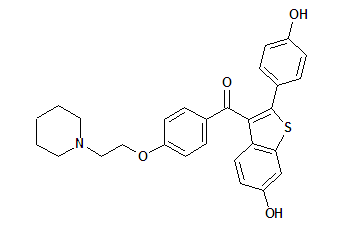Clinical Question: does raloxifene prevent breast cancer?
Setting: Outpatient (any)
Study Design: Randomized controlled trial (double-blinded)
Allocation: Uncertain
Synopsis: This study, the Continuing Outcomes Relevant to Evista (CORE) trial, is a continuation of the Multiple Outcomes of Raloxifene Evaluation (MORE) trial. Researchers in the MORE trial found that raloxifene decreased the incidence of invasive breast cancer among postmenopausal women with osteoporosis (number needed to treat [NNT] = 93 for four years; 95 percent confidence interval [CI], 61 to 161; [Cauley JA, et al. Continued breast cancer reduction in postmenopausal women treated with raloxifene: 4-year results from the MORE trial (published correction appears in Breast Cancer Res Treat May 2001;67:191). Breast Cancer Res Treat January 2001;65:125-34]). This study was designed to assess the longer term safety and efficacy of raloxifene.
Of the 6,511 patients in the MORE trial, 4,011 chose to continue in the CORE trial. This drop off between the two studies may have introduced bias in favor of the treatment group. In the CORE trial, the researchers did not re- randomize patients; they continued the same allocation (1,286 took placebo, and 2,725 took raloxifene) and maintained the double blinding of the original trial. To be eligible, women had to be 80 years or younger, have osteoporosis by bone density measurement, and be at least two years beyond menopause. Finally, the researchers evaluated the outcomes by intention to treat.
During the four years of the CORE trial, significantly more patients taking placebo developed breast cancer (2.3 versus 1.1 per-cent of patients taking raloxifene; NNT = 84; 95 percent CI, 45 to 282). No significant differences occurred in total mortality, total adverse events, serious adverse events, or drug discontinuations. However, pulmo-nary emboli increased significantly when all eight years of data were combined (adjusted risk ratio = 0.46 percent; NNT to harm = 214; 95 percent CI, 117 to 10,000).
Bottom Line: Previous research has shown that raloxifene can protect against breast can-cer after four years of use. In this four-year extension of the original study, this level of protection continued. (Level of Evidence: 1b)
Study Reference: Martino S, et al. Continuing outcomes relevant to Evista: breast cancer incidence in postmenopausal osteoporotic women in a randomized trial of raloxifene. J Natl Cancer Inst December 1, 2004;96:1751-61.
Used with permission from Barry H. Raloxifene reduces breast cancer risk (CORE). Accessed online January 25, 2005, at: http://www.InfoPOEMs.com.
COPYRIGHT 2005 American Academy of Family Physicians
COPYRIGHT 2005 Gale Group



